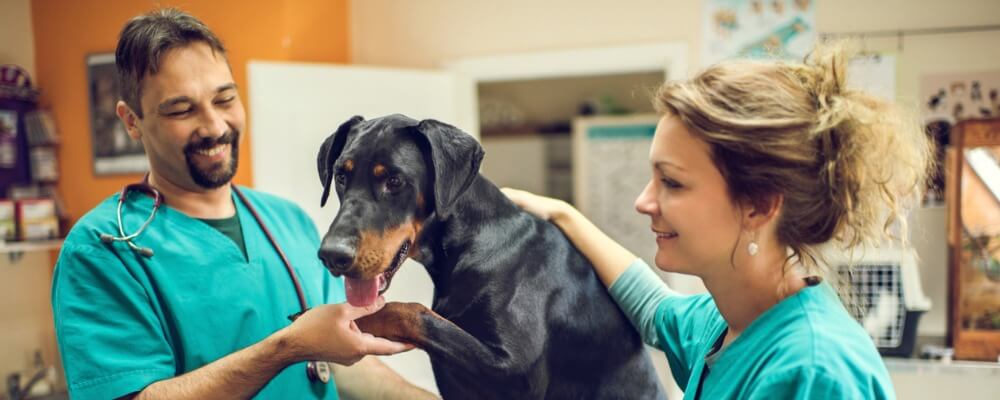As veterinary practices face staffing shortages and the pressure to avoid raising prices amidst inflation, veterinarians are being asked to do more in less time. This extra burden can negatively affect their personal well-being and the care they provide their patients. When you take appropriate steps to maximize your DVM productivity, you mitigate stress and burnout for your entire team, provide growth opportunities for other staff members, and more effectively and efficiently provide the best medical care.
If your practice isn’t fully booked, your team isn’t leaving on time, or you’re looking to improve the status quo, it’s time to explore new strategies to help you optimize efficiency and maximize DVM productivity. Get started with the following tips.
Delegate tasks to technicians
By focusing on tasks that truly require their expertise, your veterinarians can make the most of their time. Identify high-priority tasks that only a DVM can do — think surgeries, physical exams, and prescribing treatments and medications. Now, compare this list to what the veterinarians at your practice are actually doing.
Trust your technicians and support staff to do the jobs they were trained for — like obtaining patient histories, creating estimates, and administering medications — and delegate tasks when appropriate based on their skills and your state’s guidelines. Continually invest in their education and training and allow them to grow in their skillset. This not only benefits them personally but also enhances their ability to support your practice.
Optimize time management
Efficient time management is crucial for maximizing productivity. Consider implementing strategies like creating daily or weekly schedules. Use time-blocking techniques to allow for batch processing of things like handling refill requests, answering client communication, and catching up on medical notes.
Prioritize tasks based on urgency and importance, and try to minimize distractions during dedicated work periods. Work with the team to make sure they’re using your practice management system’s worklist or memos so non-urgent requests don’t have to be a verbal interruption and can be handled efficiently during a time block.
Leverage technology
Invest the time to create templates anywhere possible — for medical notes, blood work results, discharges, and client communications. Even creating an online Google doc of common responses, statements, and client education topics for easy copying/pasting can be a low-tech way to save time.
Look for practice management system-specific tools like picklists, glossaries, and templates, and for online tools like Typertask, TextExpander, or Gmail snippets and email templates. App chat and texting tools can help facilitate communication with clients and is often faster and more efficient for veterinarians and pet owners alike — no more playing phone tag or waiting on someone to listen to a voicemail only to respond when your exam rooms and lobby are full.
Lean on tools that can integrate with your PIMS to automate or simplify tasks like prescription approvals and recommendations and prevent your team from having to input client information in each platform.
Finally, consider implementing video discharge consultations for clients to proactively address pet owner questions or concerns and mitigate the need for future back-and-forth communications. Use tools like Zoom or Loom to record your voice/image along with a screen of blood work results, radiograph images, or even a patient’s medical history screen. This allows you to explain treatment plans, demonstrate proper medication administration, and answer any questions without the need for in-person visits or phone calls.
Implement standardized processes
Work with your veterinarians and technicians to develop standardized protocols and workflows for common procedures and treatments. By creating clear guidelines and templates, you can create consistency, save time on decision-making, and enhance collaboration within your team.
Embrace telemedicine
Incorporate telemedicine services into your practice where appropriate. Virtual consultations can be an efficient way to handle follow-ups, minor concerns, or client questions, saving your team and clients time and reducing the need for in-person visits.
Allow for continual professional development
Make sure your DVMs stay updated with the latest advancements and research in veterinary medicine through continuing education programs, conferences, and workshops. Expanding their knowledge and skills can help them make more informed decisions, diagnose more effectively, and provide better patient care.
Communicate effectively
Establish clear and efficient communication channels with your team, staff, and clients. Practice management system tools like worklists and memos allow for direct and often patient-linked communication when necessary. Non-industry-specific tools like email and Slack can allow team members to send info or respond to each other when they have a moment, without having to wait for the other party to be available.
Encourage open communication, provide feedback, and promote collaboration. Clear communication ensures smooth workflows, reduces errors, and improves overall productivity.
Practice proactive care and preventative medicine
Emphasize preventative healthcare and educate clients about the importance of regular check-ups, vaccinations, and parasite control. By focusing on proactive care, you can help prevent or detect issues early, reducing the occurrence of emergencies and reactive treatments and the time your DVMs spend on managing preventable conditions.
Take care of yourself
Prioritize self-care and help your team maintain a healthy work-life balance. Encourage them to take breaks, practice stress-management techniques, and allow time for personal activities and relaxation. When the team is well-rested and rejuvenated, they’ll be more focused and productive during work hours.
Remember, productivity is not about working longer hours or doing more tasks, but about working smarter, prioritizing effectively, and optimizing workflows to deliver quality care while maintaining well-being. Reach out to find out how Vetsource’s comprehensive platform and tools can help your team.



